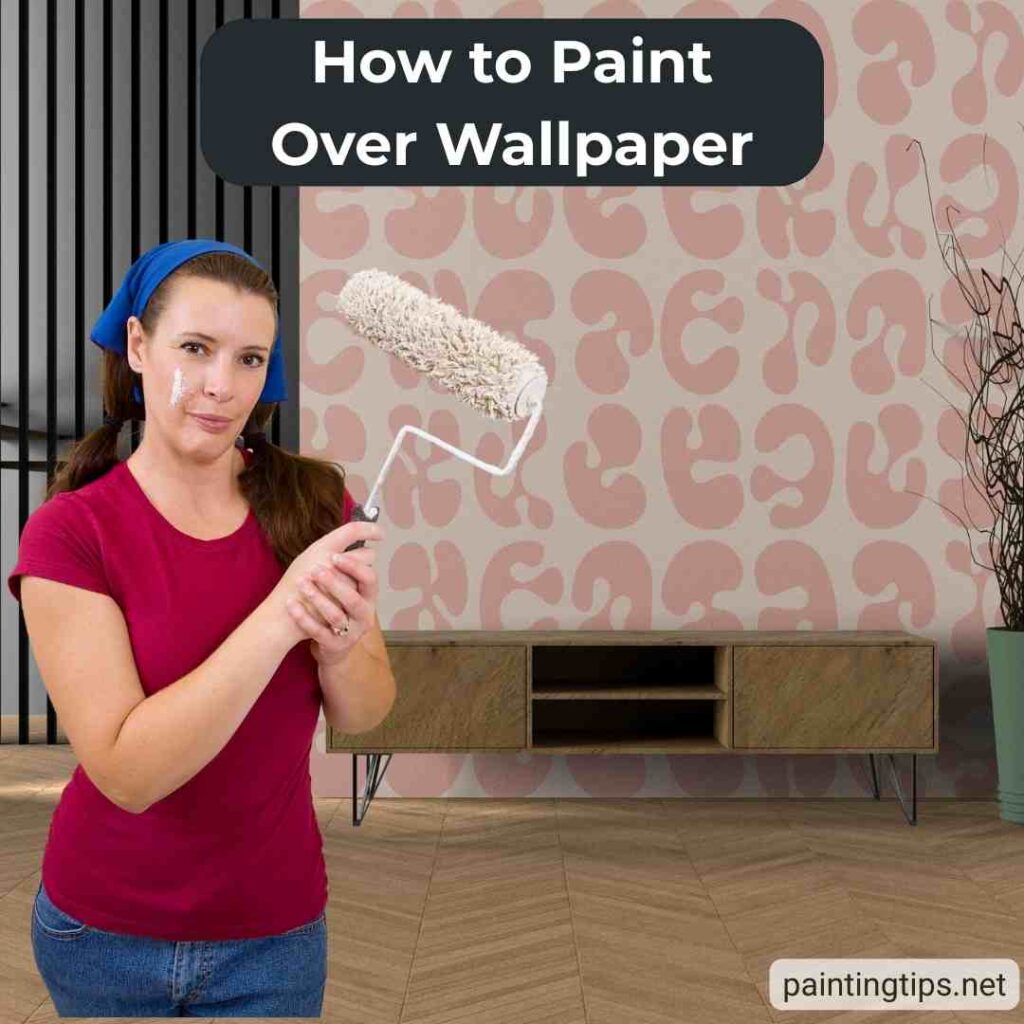Painting over wallpaper can be a convenient way to refresh a room without the hassle of stripping the old covering. However, not all wallpapers are created equal, and the success of your project depends on the type of wallpaper, its condition, and the preparation steps you take. In this guide, we’ll walk you through everything you need to know—from checking for peeling edges and cracks to choosing the right primer and paint—so you can achieve a smooth, long-lasting finish even over wallpaper.
Can You Paint Over Wallpaper?

Some wallpapers are specially designed to be painted. These typically have a white, textured, non-woven (fiber) surface. Often called paintable wallpaper, this type is the easiest and most reliable option for painting. Other than paintable wallpapers, there are two additional types you can generally paint over:
- Paper-based wallpaper: These have a paper surface that usually holds paint well. Just keep in mind that it might absorb a bit more paint, so you may need an extra coat.
- Vinyl-coated wallpaper: This has a thin, smooth vinyl layer that makes it easy to clean. However, this slick surface tends to resist paint. The good news is that with a quality primer, you can still paint over it successfully.
What Kind of Paint Can You Use on Wallpaper?
In general, you can use most wall paints to paint over wallpaper. However, instead of oil-based paints, flexible, water-based latex paints are the best option for this job.
Do I Need to Remove Wallpaper Before Painting?
No. You don’t need to remove wallpaper before painting as long as it’s firmly attached to the wall. Make sure the adhesive has fully dried—usually about 24 hours—before applying paint. This allows for a smooth, long-lasting finish without damaging the wallpaper or the wall underneath.
How to Prep Wallpaper for Painting
Preparing wallpaper properly is key to achieving a smooth, long-lasting paint finish. Start by carefully inspecting the wallpaper for any peeling edges, air bubbles, holes, or cracks. Reattach any loose sections using wallpaper adhesive, pressing them firmly and allowing the adhesive to dry completely. For holes or cracks, use a water-based filler or spackling compound, let it dry, and sand the area smooth.
Next, clean the entire wallpaper surface with a damp cloth to remove dust, dirt, or grease that could prevent the paint from adhering properly. Protect the floor and surrounding areas with a drop cloth and use painter’s tape to cover edges, baseboards, and trim.
If the wallpaper is not specifically designed to be painted, applying a stain-blocking primer is essential. This step helps the paint adhere better, blocks any patterns or dark colors underneath, and prevents peeling over time. Once the primer is dry, your wallpaper is fully prepped and ready for painting, ensuring a clean and durable finish.
How to Paint Over Wallpaper

While we almost always recommend removing wallpaper first, it’s not always possible. In some cases, painting over wallpaper can be a quick way to give a space a fresh new look. If you’re set on painting over it, the details are below. But if you decide to remove the wallpaper and paint the wall instead, this might be helpful: “Related article: How to paint after removing wallpaper.”
1-Make Sure the Wallpaper is Secure
If the wallpaper you plan to paint isn’t firmly attached, the paint roller might pull it loose while painting. Check for any loose sections and reattach them with wallpaper adhesive. Let it dry thoroughly before starting.
2-Protect the Floor
Lay a drop cloth on the floor to catch any drips or splatters. Use painter’s tape to secure the edges of the drop cloth to your baseboards for full coverage.
3-Apply Primer
If your wallpaper isn’t specifically paintable, applying a primer is a smart move. A high-quality primer will help the paint stick better and block out any existing patterns or dark colors on the wallpaper. This is especially important if you’re painting over vinyl-coated wallpaper — we highly recommend using a stain-blocking primer for the best results.
4-Apply Two Coats of Paint
Just like regular walls, it’s best to apply at least two coats of paint to wallpaper. Allow the first coat to dry for at least 3 hours before applying the second.
Pro tip: If the wallpaper tends to stick to the roller, thin your first coat by about 20% with water. This will reduce suction and prevent the roller from pulling at the wallpaper.
Tools You’ll Need
- Drop cloth
- Painter’s tape
- Utility knife
- Wallpaper adhesive
- Putty knife
- Water-based filler (spackling compound)
- Sandpaper
- Paint roller and tray
- Paintbrush (for corners and edges)
- Stain-blocking primer
- Interior wall paint (latex or acrylic-based)
Can You Paint Over 20-Year-Old Wallpaper?
Yes, you can paint over 20-year-old wallpaper, but you’ll need to ensure it’s in good condition. Check for any peeling, cracks, or damage. If the wallpaper is still firmly attached and not deteriorating, you can follow the usual prep steps and apply paint. However, if it’s showing signs of wear, removing it might be a better option for a long-lasting result. “You might also like: Wallpaper or paint.”